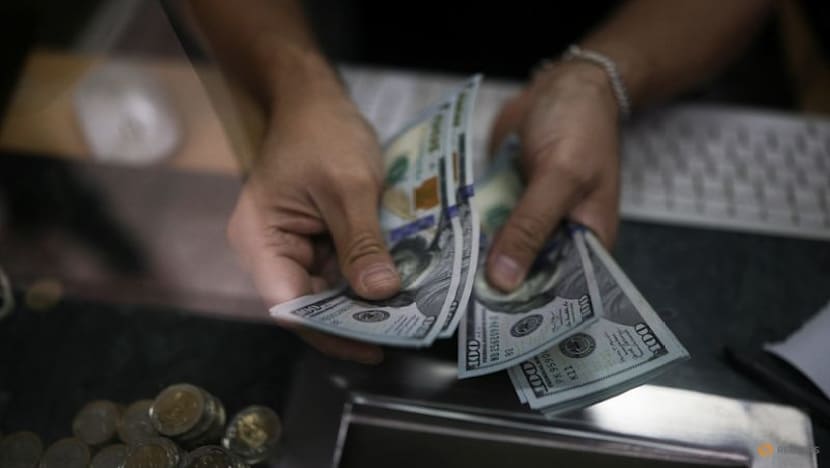Dollar sinks to four-year low vs euro ahead of Fed rate decision

FILE PHOTO: A person counts U.S. one-hundred dollar bills at a currency exchange office, in Santiago, Chile April 4, 2025. REUTERS/Pablo Sanhueza/File Photo
NEW YORK : The dollar fell across the board on Tuesday, sinking to four-year low against the euro, as investors firmed bets for a Federal Reserve interest rate cut this week.
The euro was 0.5 per cent higher at $1.827, its highest since September 2021. The U.S. dollar index, which tracks the U.S. currency against a basket of six major rivals, was 0.6 per cent lower at 96.787, its lowest since July 3.
The buck, which had steadied in recent months following a significant drop earlier in the year, has come under renewed selling pressure as expectations have risen for the Fed to resume cutting interest rates and as U.S. President Donald Trump renewed calls for aggressive monetary easing.
Markets expect a 25-basis-point rate cut on Wednesday, with rapidly softening labor market data being the key driver of the ramp-up in easing bets in recent weeks.
"The dollar is trading with a heavy tone across the board as investors brace for a dovish message in Wednesday’s voting record, ‘dot plot’ summary of economic projections, and press conference," said Karl Schamotta, chief market strategist at Corpay.
"Jerome Powell & Co are seen downplaying inflation risks and expressing a clear bias toward supporting labor markets —something that could help set the stage for a sequential set of cuts in the months ahead — and traders are positioning for asymmetric moves across most major currency pairs," Schamotta said.
The dollar got little relief from data on Monday that showed U.S. retail sales increased more than expected in August. Investors remain concerned about U.S. economic growth amid labor market weakness and rising goods prices because of tariffs on imports.
"There was a bounce-back in spending at food services and drinking places as well as a big jump in online spending. The consumer is down, but not out," Brian Jacobsen, chief economist at Annex Wealth Management, said in a note.
Sterling was 0.4 per cent higher at $1.36530, a more than two-month high, after data showed on Tuesday that Britain's jobs market has lost a little more steam, potentially easing worries at the Bank of England about persistent inflation pressures.
The Office for National Statistics figures showed the number of workers on companies' payrolls falling for a seventh month in a row, while basic wage growth in the private sector - watched closely by the BoE - slowed to 4.7 per cent between May and July from 4.8 per cent in the three months to June.
The BoE is expected to keep interest rates on hold this week, having cut in August.
The euro found support Tuesday from data that showed that euro zone industrial production inched higher in July, confirming views that the sector is holding up despite trade tensions, even if its rate of expansion is anemic.
German investor morale unexpectedly rose in September, the ZEW research institute said on Tuesday, in a sign of cautious optimism.
Against the yen, the dollar slipped 0.5 per cent to 146.76, ahead of the Bank of Japan policy meeting on Friday, with money markets expecting the central bank to keep rates at 0.5 per cent.
Japan's farm minister and the chief government spokesperson joined the race on Tuesday to lead the ruling party and replace outgoing Prime Minister Shigeru Ishiba, who announced his resignation last month.
Cryptocurrency bitcoin was down 0.2 per cent at $115,145, slipping for a fourth straight session.













